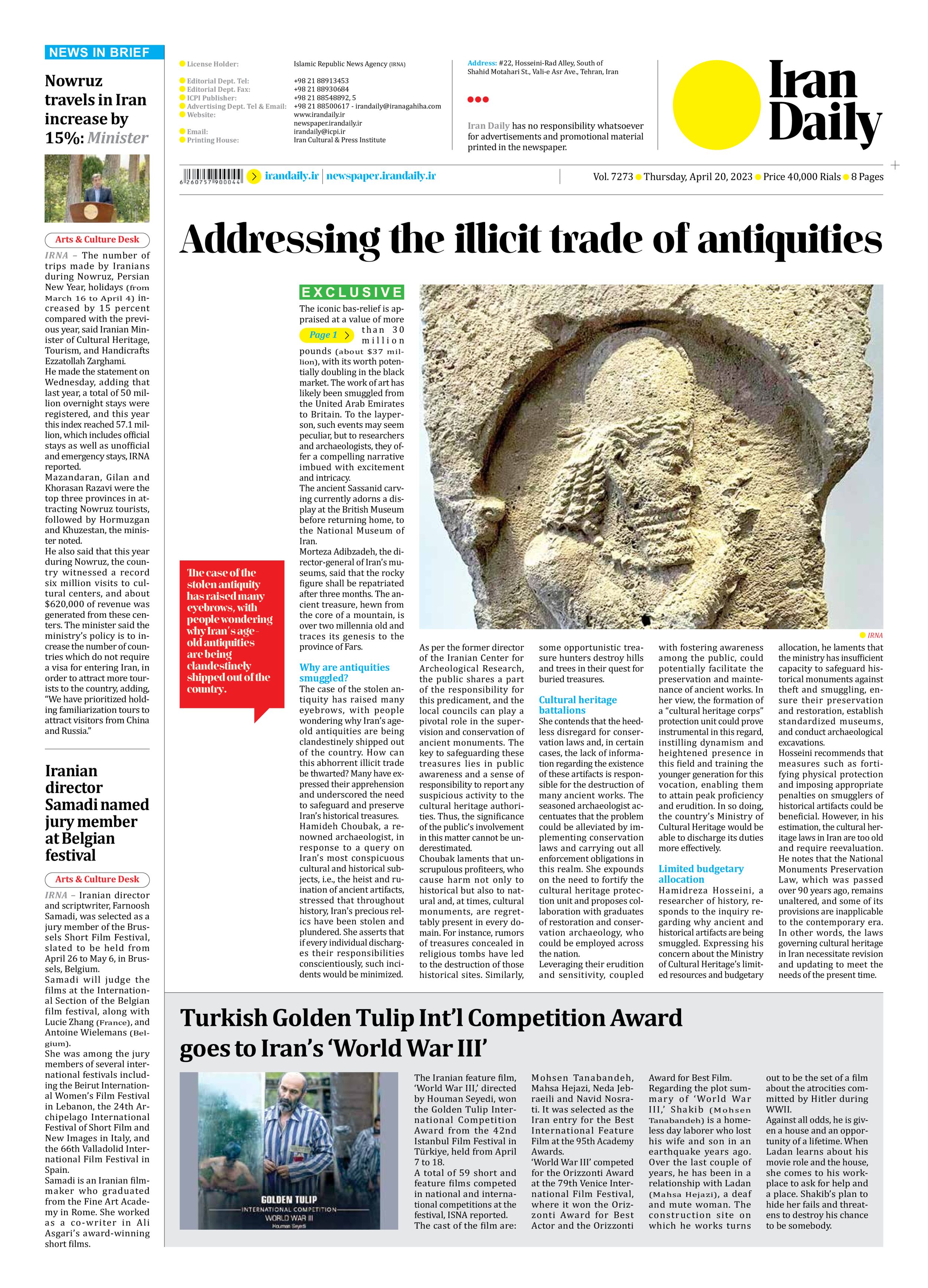
Addressing the illicit trade of antiquities
Page 1
The iconic bas-relief is appraised at a value of more than 30 million pounds (about $37 million), with its worth potentially doubling in the black market. The work of art has likely been smuggled from the United Arab Emirates to Britain. To the layperson, such events may seem peculiar, but to researchers and archaeologists, they offer a compelling narrative imbued with excitement and intricacy.
The ancient Sassanid carving currently adorns a display at the British Museum before returning home, to the National Museum of Iran.
Morteza Adibzadeh, the director-general of Iran’s museums, said that the rocky figure shall be repatriated after three months. The ancient treasure, hewn from the core of a mountain, is over two millennia old and traces its genesis to the province of Fars.
Why are antiquities smuggled?
The case of the stolen antiquity has raised many eyebrows, with people wondering why Iran’s age-old antiquities are being clandestinely shipped out of the country. How can this abhorrent illicit trade be thwarted? Many have expressed their apprehension and underscored the need to safeguard and preserve Iran’s historical treasures.
Hamideh Choubak, a renowned archaeologist, in response to a query on Iran’s most conspicuous cultural and historical subjects, i.e., the heist and ruination of ancient artifacts, stressed that throughout history, Iran's precious relics have been stolen and plundered. She asserts that if every individual discharges their responsibilities conscientiously, such incidents would be minimized.
As per the former director of the Iranian Center for Archeological Research, the public shares a part of the responsibility for this predicament, and the local councils can play a pivotal role in the supervision and conservation of ancient monuments. The key to safeguarding these treasures lies in public awareness and a sense of responsibility to report any suspicious activity to the cultural heritage authorities. Thus, the significance of the public’s involvement in this matter cannot be underestimated.
Choubak laments that unscrupulous profiteers, who cause harm not only to historical but also to natural and, at times, cultural monuments, are regrettably present in every domain. For instance, rumors of treasures concealed in religious tombs have led to the destruction of those historical sites. Similarly, some opportunistic treasure hunters destroy hills and trees in their quest for buried treasures.
Cultural heritage battalions
She contends that the heedless disregard for conservation laws and, in certain cases, the lack of information regarding the existence of these artifacts is responsible for the destruction of many ancient works. The seasoned archaeologist accentuates that the problem could be alleviated by implementing conservation laws and carrying out all enforcement obligations in this realm. She expounds on the need to fortify the cultural heritage protection unit and proposes collaboration with graduates of restoration and conservation archaeology, who could be employed across the nation.
Leveraging their erudition and sensitivity, coupled with fostering awareness among the public, could potentially facilitate the preservation and maintenance of ancient works. In her view, the formation of a “cultural heritage corps” protection unit could prove instrumental in this regard, instilling dynamism and heightened presence in this field and training the younger generation for this vocation, enabling them to attain peak proficiency and erudition. In so doing, the country’s Ministry of Cultural Heritage would be able to discharge its duties more effectively.
Limited budgetary allocation
Hamidreza Hosseini, a researcher of history, responds to the inquiry regarding why ancient and historical artifacts are being smuggled. Expressing his concern about the Ministry of Cultural Heritage’s limited resources and budgetary allocation, he laments that the ministry has insufficient capacity to safeguard historical monuments against theft and smuggling, ensure their preservation and restoration, establish standardized museums, and conduct archaeological excavations.
Hosseini recommends that measures such as fortifying physical protection and imposing appropriate penalties on smugglers of historical artifacts could be beneficial. However, in his estimation, the cultural heritage laws in Iran are too old and require reevaluation. He notes that the National Monuments Preservation Law, which was passed over 90 years ago, remains unaltered, and some of its provisions are inapplicable to the contemporary era. In other words, the laws governing cultural heritage in Iran necessitate revision and updating to meet the needs of the present time.







